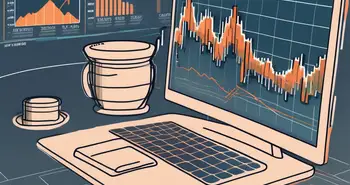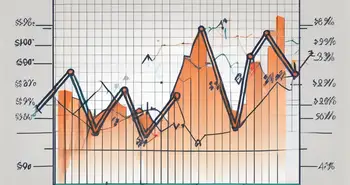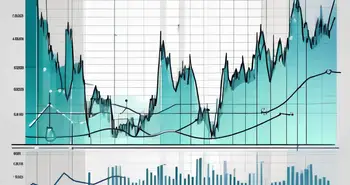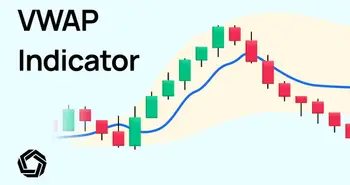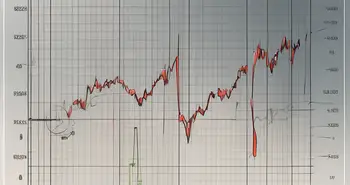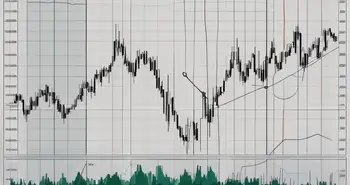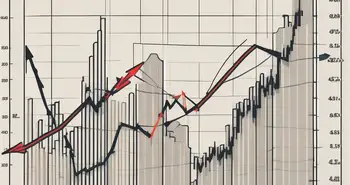Anchored VWAP: A Trader’s Guide to Identifying Key Price Levels

In the world of trading, precision and context are key. One tool that bridges these two elements is the Anchored Volume Weighted Average Price (VWAP). This guide aims to demystify Anchored VWAP, helping you understand how to leverage it effectively in your trading strategies.
What is Anchored VWAP?
Anchored VWAP is an advanced version of the traditional Volume Weighted Average Price, which many traders use to track price movements relative to volume. While standard VWAP resets daily, Anchored VWAP allows traders to set a specific point in time from which they want to measure the average price, giving context to price movements over chosen durations.
The Basics of Volume Weighted Average Price
To grasp Anchored VWAP fully, you should first understand the basic VWAP concept. Standard VWAP is calculated by taking the cumulative total of price times volume and dividing that by the total volume over a specific time period—usually a trading day. It provides a baseline for traders to understand where the average price is in relation to volume traded.
As an example, think of VWAP as a shopping mall's “average cost” of items sold that day. If you were to track how much all shoppers paid, you'd get an average selling price enriched by the sales volume of each item. Similarly, VWAP gives traders insight into whether prices are fair based on the volume of transactions.
The Significance of Anchoring in VWAP
Anchoring allows traders to tailor their analysis. Instead of looking at prices in a vacuum, you can anchor VWAP from critical events, such as earnings announcements, high-volume trading days, or technical breakout points. This anchored perspective can reveal how price reacts to significant market events, offering a clearer picture of market sentiment.
For instance, if a trader anchors VWAP to a major earnings report, they can observe how the stock price behaves in the days following the announcement. This can provide insights into whether the market is bullish or bearish based on the volume and price action that follows. Additionally, by analyzing multiple anchored VWAP points, traders can identify potential support and resistance levels, enhancing their trading strategies and decision-making processes.
Moreover, Anchored VWAP is particularly useful in volatile markets where price swings can be dramatic. By anchoring to a specific event, traders can filter out noise and focus on significant trends that may emerge post-event. This method not only aids in risk management but also helps in determining optimal entry and exit points, making it a valuable tool for both day traders and long-term investors alike.
The Mechanics of Anchored VWAP
Understanding how to compute and interpret Anchored VWAP is crucial for its effective application in trading strategies. Let’s break down these mechanics further.
Calculating Anchored VWAP
The calculation begins at a selected “anchor” point—be it a significant price movement or a news release. From there, you’ll take the cumulative sum of price times volume and divide that by the cumulative volume from that anchor point onward.
For example, if you anchored your VWAP on a surge day and the price-quantity combinations look like this:
- Price: $10, Volume: 100 => Contribution: $1,000
- Price: $12, Volume: 150 => Contribution: $1,800
The resulting Anchored VWAP formula would yield a price that reflects the weighted average starting from that day, giving you a crucial benchmark for evaluating subsequent price movements. This method of calculation allows traders to adapt their strategies based on historical price action, making it a versatile tool in various market conditions. By selecting different anchor points, traders can analyze how the stock has reacted to different events, providing deeper insights into market sentiment and potential future movements.
Interpreting Anchored VWAP Values
Once calculated, the Anchored VWAP acts as a dynamic support or resistance level. Prices above the Anchored VWAP indicate bullish sentiment, while prices below suggest bearishness. An example would be a stock that is trading consistently above its Anchored VWAP, suggesting it's maintaining strong buying pressure, which could signal an entry point for investors looking for potential gains. Conversely, if a stock consistently trades below the Anchored VWAP, it may indicate that sellers are in control, prompting traders to consider protective measures or short positions.
Moreover, the Anchored VWAP can also serve as a reference for setting stop-loss orders. Traders often utilize this indicator to determine optimal exit points, as a breach of the Anchored VWAP can signal a potential reversal in trend. Additionally, the context of the broader market environment plays a significant role in interpreting these values; for instance, during periods of high volatility, the Anchored VWAP may shift more dramatically, requiring traders to adjust their strategies accordingly. Understanding these nuances can enhance a trader's ability to make informed decisions in a fast-paced market.
The Role of Anchored VWAP in Trading
The ramifications of using Anchored VWAP unfold dramatically in practical trading applications, particularly for generating signals and managing risks.
Using Anchored VWAP for Buy and Sell Signals
Many traders adopt a strategy where they buy when the price crosses above the Anchored VWAP and sell when it dips below. Such strategies rely on the assumption that many market participants consider this level while making buy/sell decisions. For instance, if a stock breaches the Anchored VWAP positively, it might indicate a strong reversal pattern emerging.
Risk Management with Anchored VWAP
Risk management is paramount in trading, and Anchored VWAP plays a critical role here. Traders often establish stop-loss orders based on the deviations from their Anchored VWAP, ensuring they are safeguarded against sudden market swings. Setting stops a few ticks below the Anchored VWAP can protect against severe downturns while still allowing participation in upward movements.
Advantages and Disadvantages of Using Anchored VWAP
While Anchored VWAP provides robust insights, it also comes with its share of advantages and disadvantages that traders should consider.
Benefits of Anchored VWAP in Trading
- Customized Analysis: Anchored VWAP enables traders to personalize their analyses based on significant historical points.
- Sentiment Measurement: By establishing potential support and resistance levels, it gives insights into market sentiment.
- Trend Confirmation: A quick look at price movements relative to Anchored VWAP can confirm ongoing trends.
Potential Drawbacks and Limitations
- Complexity: Beginners may find it challenging to determine the most effective anchor points.
- Not Always Accurate: In highly volatile markets, the Anchored VWAP might provide false signals leading traders astray.
Strategies for Implementing Anchored VWAP
To make the best use of Anchored VWAP, it’s essential to develop tailored strategies that fit various market conditions.
Combining Anchored VWAP with Other Indicators
No indicator is perfect on its own. Pairing Anchored VWAP with other technical indicators like Moving Averages or MACD can enhance trading signals. For instance, if the Anchored VWAP aligns with a moving average crossover, it strengthens the case for a potential trade.
Adjusting Anchored VWAP for Market Conditions
Market conditions are ever-changing, and adjusting your Anchored VWAP calculations based on current volatility can be beneficial. For instance, during earnings seasons or major economic reports, traders might want to use shorter anchor periods to reflect quick price movements.
FAQ
What is Anchored VWAP?
Anchored VWAP is an adjusted volume-weighted average price that starts calculations from a predetermined anchor point, helping traders assess price movements more contextually.
How is Anchored VWAP calculated?
It’s computed by taking the cumulative sum of price multiplied by volume from the anchor point and dividing it by total volume from that same point onward.
Why is Anchored VWAP important?
It allows traders to have a customized price metric that's informed by significant events, aiding in both trading decisions and risk management.
Can Anchored VWAP be combined with other indicators?
Yes, many traders use it in conjunction with other technical indicators for more robust trading strategies.
By understanding Anchored VWAP and its applications, you can navigate the trading world with greater insight and strategic prowess. As with all strategies, practice and analysis are keys to success!
Ready to take your trading to the next level with the insights of Anchored VWAP? Discover the innovative world of Morpher, where cutting-edge blockchain technology meets trading without boundaries. With zero fees, infinite liquidity, and the ability to trade across a multitude of asset classes, Morpher.com is the platform that empowers you to trade on your terms. Whether you're interested in fractional investing, short selling without interest fees, or leveraging up to 10x, Morpher offers a unique trading experience tailored for the modern investor. Sign up now to transform your trading strategy and receive your free sign-up bonus. Sign Up and Get Your Free Sign Up Bonus.

Disclaimer: All investments involve risk, and the past performance of a security, industry, sector, market, financial product, trading strategy, or individual’s trading does not guarantee future results or returns. Investors are fully responsible for any investment decisions they make. Such decisions should be based solely on an evaluation of their financial circumstances, investment objectives, risk tolerance, and liquidity needs. This post does not constitute investment advice.

Painless trading for everyone
Hundreds of markets all in one place - Apple, Bitcoin, Gold, Watches, NFTs, Sneakers and so much more.

Painless trading for everyone
Hundreds of markets all in one place - Apple, Bitcoin, Gold, Watches, NFTs, Sneakers and so much more.

